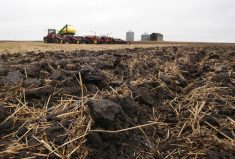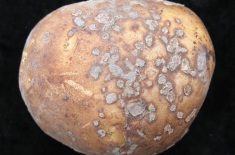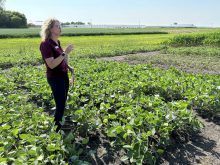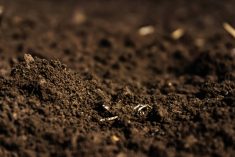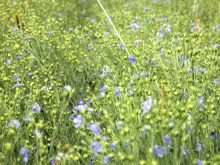Soybean acreage is soaring in Manitoba, but some basic agronomy — such as how, when, and with what to plant the crop — is still being hammered out.
Seeding dates and rates, row spacing, and post-seeding rolling practices are the focus of trials being conducted by Brent VanKoughnet of Agri Skills for the Manitoba Pulse Growers Association.
“These are not small plots — they’re 30 to 60 feet wide and a half-mile long, and they’re replicated,” he said at the recent Manitoba Special Crops Symposium.
“The goal is to replicate farm management strategies in the field.”
Read Also

New rules for organic farming on the table
Canada’s organic farmers have until July 29 to comment on new standards that would allow permit more products, but also crack down on organic management lapses.
For planting, VanKoughnet used an air seeder with eight-inch spacing, another with 10-inch spacing, and a vacuum planter that can be adjusted to between 15 and 30 inches in spacing.
In the timing trial, he planted the Richer variety, using an inoculant at 1.5 times the standard dose and targeted a surviving population of 170,000 plants. He planted April 30, May 9, 17, 24, and 30. Soil temperatures at planting were 7 C, 10 C, 11 C, 14 C, and 12 C, with emergence, respectively, at 17 days, 13 days, 10 days for both the May 17 and 24 trials, and nine days.
VanKoughnet said he expected to see clear-cut differences between the treatments, with the best yields coming somewhere in the middle when soil temperatures where higher, yet the growing season was still a bit longer.
“We saw flat yields,” he said. “You might look at that and think you can plant whenever you want. But that misses the story behind those numbers. That first planting was exposed to significant risk that doesn’t show up on the yield table.”
Those first-seeded soybeans were hit hard by a late frost, and the damage was significant.
“I bet 50 per cent of the plants were frozen off to the cotyledon,” VanKoughnet said. “Surprisingly, almost all of them bounced back and grew new branches from each side, which is amazing because as you can see, that growing point is dead.”
Another curious wrinkle was other treatments that had emerged enough to suffer damage didn’t seem to be any the worse for wear. VanKoughnet said he suspects the answer might be how much straw was in the row. For example, the May 9 treatment should have been hit but wasn’t.
“I planted it using a waffle coulter, which kicked up just a little bit of black dirt,” he explained. “It really did seem to be the difference between whether 30 or 40 per cent was frozen or not. I’ve never seen stronger evidence of it in the field.
“If I hadn’t seen it (the recovery from frost and dodging frost due to black soil) I never would have believed either of those things.”







